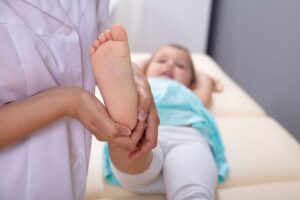As children grow and develop, their musculoskeletal system undergoes a complex process of formation and transformation. Pediatric orthopaedic conditions are medical issues that affect the bones, joints, muscles, and ligaments of infants, children, and adolescents. These conditions can vary widely in their nature and severity, and it’s crucial for parents and caregivers to be informed about the common orthopaedic challenges that children might face. In this article, we’ll explore the world of pediatric orthopaedic conditions, shedding light on their types, causes, and potential treatments.
- What are Orthopaedic Conditions in Babies?
Orthopaedic conditions in babies encompass a range of abnormalities that affect the musculoskeletal system. These conditions can either be congenital, meaning they are present at birth, or they can develop over time. Babies can experience issues such as misaligned hips (developmental dysplasia of the hip), clubfoot (talipes equinovarus), and brachial plexus injuries due to birth trauma. Congenital scoliosis, a curvature of the spine that occurs in the womb, is another example of a pediatric orthopaedic condition.
Orthopaedic conditions in babies can result from genetic factors, intrauterine positioning, or complications during birth. Early detection and intervention are essential for managing these conditions effectively and promoting proper development.

- What are Common Orthopaedic Conditions?
As children grow, they may encounter various orthopaedic conditions that can affect their mobility and overall well-being. Some common orthopaedic conditions in children include:
Scoliosis: A sideways curvature of the spine that can develop during growth spurts in adolescence.
Flatfoot: Also known as “pes planus,” it refers to a flattened arch on the bottom of the foot.
Sever’s Disease: An inflammation of the growth plate in the heel bone, often seen in active children.
Osgood-Schlatter Disease: A condition characterized by pain and swelling at the point where the tendon from the kneecap attaches to the shinbone.
Slipped Capital Femoral Epiphysis (SCFE): A hip condition where the head of the thighbone slips off the femur’s neck.

- What are Bone Defects in Babies?
Bone defects in babies can arise due to various factors, including genetic abnormalities, environmental influences, and maternal health during pregnancy. Conditions like clubfoot, where the foot is turned inward, or limb length discrepancies, where one limb is shorter than the other, are examples of bone defects. These issues can impact a child’s ability to walk, run, or engage in physical activities.
Early diagnosis and treatment, often involving orthopaedic specialists, can help manage and correct these bone defects, allowing children to achieve optimal mobility and function.
- Difference Between Pediatric Orthopaedic and Orthopaedic
The distinction between pediatric orthopaedic and general orthopaedic lies in the patient population they serve. Pediatric orthopaedic specialists focus exclusively on children’s musculoskeletal issues, which can differ from those in adults due to growing bones and unique developmental challenges. General orthopaedic surgeons, on the other hand, treat musculoskeletal issues in patients of all ages.
Book your consultation today with Dr. Rahul Grover at https://glyraorthopaedics.com/
